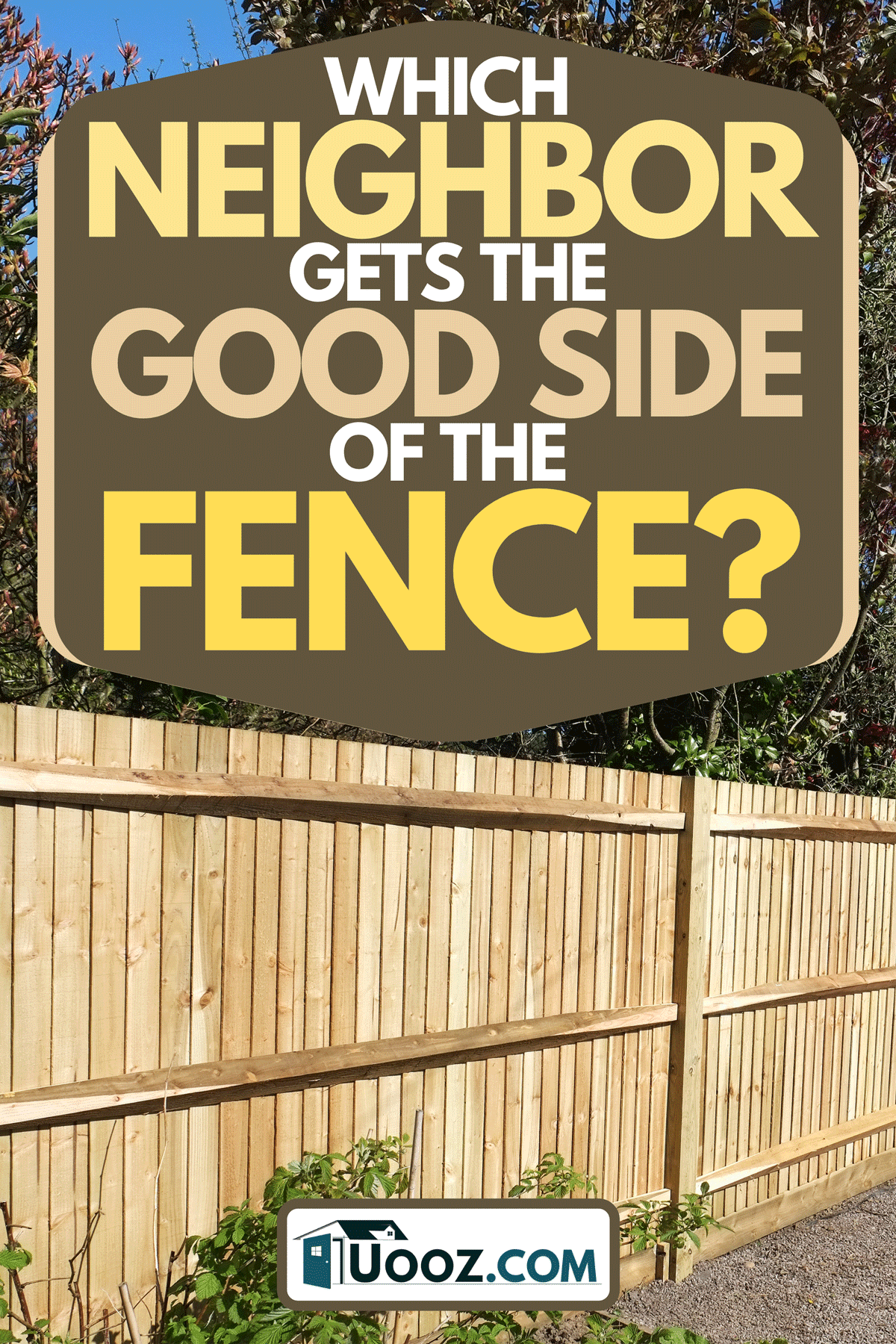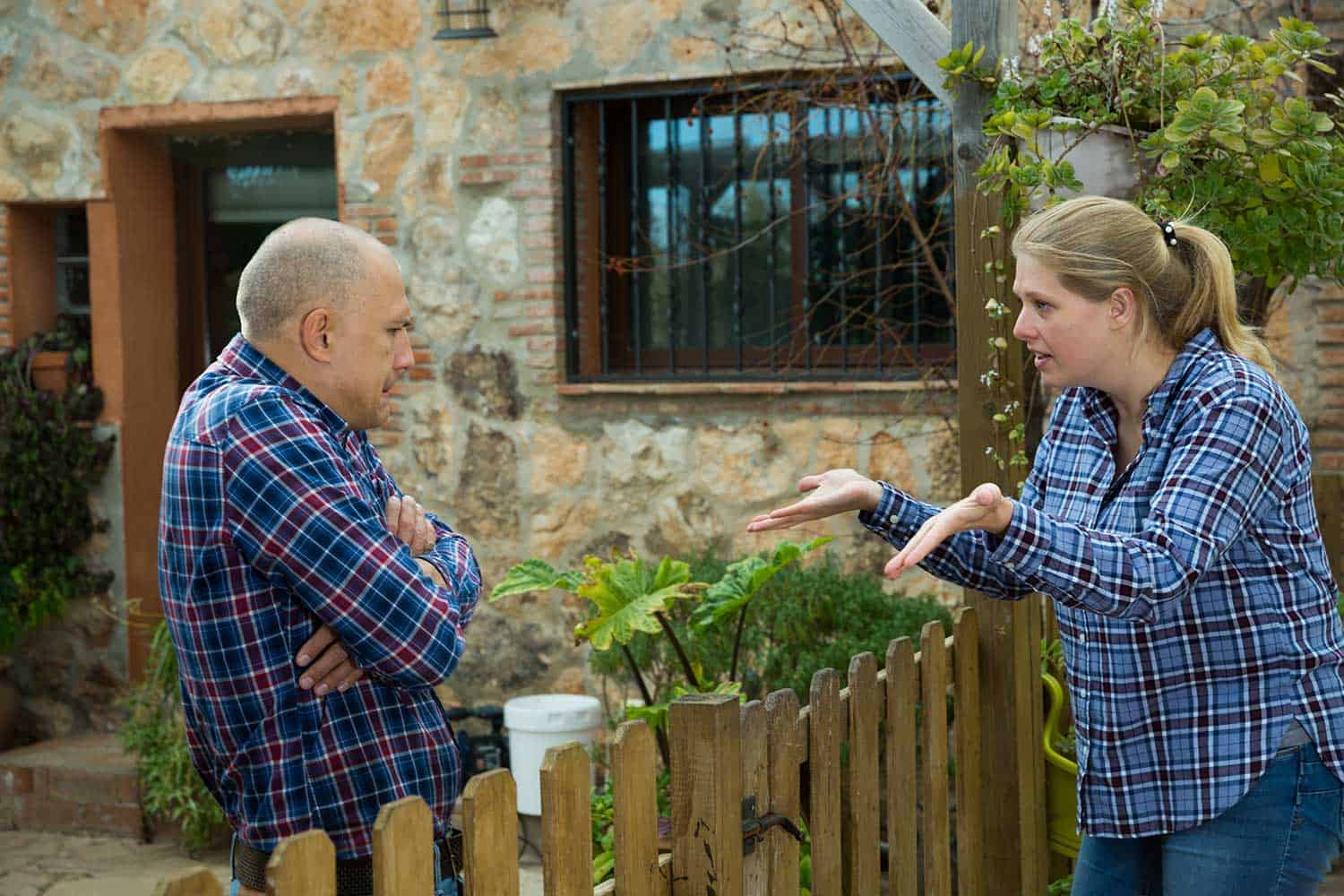You are thinking about installing a fence between you and your neighbor but want to know which direction it should face. Chain link fences look the same from both sides, but other kinds of fences look prettier from one side. You want to know if you should be polite and face the fence in the direction that your neighbor views or to install it to your personal preference. We've researched how to position a fence to give you all the details for consideration.
Face the good side of the fence towards your neighbor. Facing the bad side of the fence outward will look like the fence is installed incorrectly. This way, you can continue the fence line around the house and have the fence look uniform and pretty from the street.
It might be surprising that the good side of the fence should not be visible from your yard. It is unlikely that you have seen a house where the fence's construction faces the road. This post will discuss the direction the fence should face and who should pay for it. You also will learn how close to the property line you should build your fence. Lastly, we will estimate how much it costs to build a fence around a house.

Which Neighbor Gets The Good Side Of The Fence?
The good side of the fence is the part that does not show the construction. You will only see the tall wooden pickets. Don't assume that the other side of the fence is the bad side or ugly. Your house will look uglier from the street if you install the fence in the wrong direction. You don't want to feel regret when you return home and see wooden planks facing the street. This is the assumption that your fence continues in all directions to create a complete backyard.

If you are only installing a fence that goes in one direction along your neighbor's property line, then you can consider installing the good side of the fence toward your property. It is usually the polite thing to ask your neighbor which direction they would like the fence to face in this case. You may also consider whether you would like to continue the fence line to create a fully enclosed yard. If considering this installation for the future or planning to sell your home, then it is best to have the good side of the fence facing your neighbor. This will create the best looking fence for everyone in the neighborhood to see.
You may not want an ugly side of the fence to face inward to your yard, but that is the normal direction. When you are spending time in your fenced in yard, you will not likely think of the fence as ugly. Making your house look normal and uniform from the outside is what will look the best for everyone. If you want to consider other materials like bamboo for your fence, then check out "How Long Does A Bamboo Fence Last? [And How To Make It Last Longer]."
Backyard X-Scapes Bamboo Fence
Click here to buy this fence at Amazon.
Do Neighbors Usually Split The Cost Of A Fence?
Neighbors that share a property line will often split the cost of a new fence. This is the best option if you talk to your neighbor, and both parties want to install a fence on the property line. If the fence is your idea and your neighbor doesn't care about having a fence, then you should pay for the full cost of the fence. You may ask your neighbor to chip in, but it is not his or her obligation to share any of the cost in most jurisdictions. Some local laws will require that the cost be split because both parties benefit from the fence.
Neighbor Law: Fences, Trees, Boundaries, and Noise
Click here to buy this Neighbor Law book at Amazon.
Can I Paint My Side Of A Neighbor's Fence?
You can paint your side of your neighbor's fence if it falls on your property. If the fence is completely on your neighbor's property, then you have no authority to do anything to the fence without getting permission from your neighbor. In all cases, you should consult your neighbor before you begin painting the fence. You are not able to change the color of your neighbor's shed, garage, or house even though you have to look at it every day. The same applies to a fence that falls completely on your neighbor's property.
How Close To The Property Line Can I Build A Fence?
You can build a fence on the property line or just inside on your own property. You will need to get your neighbor's approval or permission to install a fence on the property line in some jurisdictions, but that is not always required. Depending on where you live, your neighbor can build a fence on the property line without getting your permission. This is bad practice, as you want to have a cordial relationship with the people that live right next to you.

Before you embark on building a fence, you should approach your neighbor. If you both like the idea of a fence, then placing the fence on the property line is the best option. Otherwise, you will forfeit your rights to a small strip of the property after the fence has been in place for a period of time. If your neighbor does not want a fence, you may be able to proceed but should consider installing it one-foot from the property line so that the fence is erected completely on your property.
How Much Does It Cost To Build A Fence Around The House?
This question depends on your house's size and how much of your yard you want to be fenced. The median lot size for a single-family home in the US is 8,982 square feet. To get the dimensions of this lot, you can take the square root. The square root equals just under 95. That means an average square city lot would measure 95 feet on each of the four sides. That comes to nearly 300-feet of fence line to cover three sides. The house's front side might only be another 50-feet to extend from the property lines to the edges of the house.
The cost to install fencing with materials and labor averages $10 to $20 per linear foot. This would be $3,500 to $7,000 to install 350-feet of wooden fence around a 2,000 square foot house on an average lot size of nearly 9,000 square feet. Wire or electric fencing is cheaper and costs $1 to $6 per linear foot. This would cost $350 to $2,100 to install 350-feet of fencing around your house. Other materials can be used for fencing. Check out "9 Best Natural Fences For Your Backyard."
In Closing
Installing a fence is a project that benefits you and your neighbor by providing more privacy. It can also provide a safe place for pets to spend time outdoors. You want to make sure that your neighbor is aware of your plans to build a fence before you get started. Legally, this may not be necessary for some jurisdictions. The main concern is keeping a cordial, friendly relationship with your close neighbors because you have to see them nearly every day.
If you want to paint a fence that your neighbor paid for, you should also consult the neighbor. This might not be necessary if the fence rests on your property, but it is more than likely it is on your neighbors' property or sits on the property line. When a fence is on the property line, it is considered both neighbors' responsibility to maintain. It may also be the responsibility to split the cost, depending on the jurisdiction. It is a good neighborly choice to pay for the cost of the fence yourself if your neighbor is not interested. Familiarize yourself with local laws and ordinances if you want to proceed and would like your neighbor to share in the cost.


